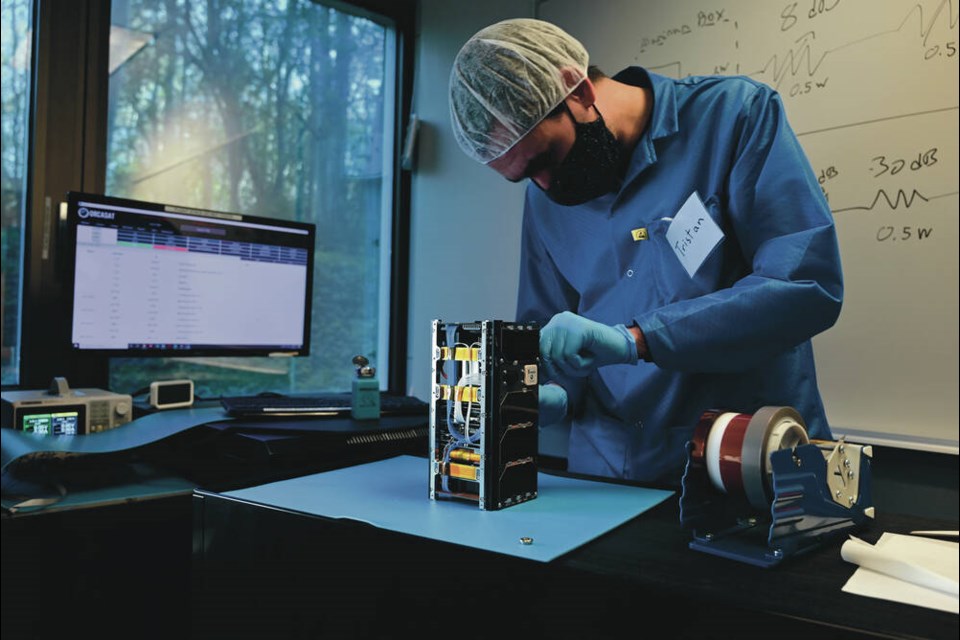A University of Victoria satellite the size of a two-litre milk carton, designed to calibrate light, was fired into space Saturday, after four years of work by dozens of students, faculty and researchers.
ORCASat started its journey to space at 11:20 a.m. Saturday as part of NASA’s SpaceX Falcon 9 rocket launch at Kennedy Space Center in Florida.
Early this morning, about 4 a.m., the satellite is scheduled to be taken on board the International Space Station where it will wait for a few weeks before being fired into space to orbit the Earth for as long as it can survive.
Saturday’s successful launch was extra-sweet because a planned Tuesday launch was postponed due to poor weather. Watchers from UVic returned home after the delayed launch.
A nervous Alex Doknjas, ORCASat project manager, went into his family’s living room at 10:30 a.m. Saturday where he waited with loved ones and about 20 others on a video chat, including a UVic group, to watch the event together. Cheers and claps erupted when the rocket launched on time. “It’s great. It’s fantastic,” he said.
There was a little wind picking up on the launch site shortly before liftoff was scheduled and Doknjas said he was worried it was about to get scrubbed again, but that didn’t happen.
The excitement has been years in the making thanks to about 140 people who have been part of a team at the University of Victoria Centre for Aerospace Research.
Full-time researchers, co-op and volunteer students from UVic Satellite Design, UBC Orbit, and Simon Fraser University Satellite Design have all contributed.
The ORCASat (for Optical Reference Calibration Satellite) measures 10 centimetres by 10 centimetres by 23 centimetres and weighs 2.5 kilograms.
Doknjas said as far as he knows this is the first “Cubesat” designed and built in this province. “That’s a pretty big milestone.”
The estimated date to launch ORCASat is between Dec. 29 and the first week in January.
ORCASat will be doing a 400-kilometre orbit around Earth and travelling at 7.5 kilometres a second. “It’s pretty fast.”
It is not known exactly how long it will last but it could be six to eight months, up to 18 months, Doknjas said. Factors such as sun flares, solar radiation, pressure and more can all impact the life of the satellite.
ORCASat is basically an artificial star, a reference light source in orbit that can be viewed by telescopes on Earth.
Astronomers can measure how bright ORCASat appears, just as they would an astronomical object.
At the same time, the satellite, using two laser light sources, will measure the amount of light that an astronomical object is emitting.
This will allow ground-based telescopes to be calibrated to measure the absolute brightness of an astronomical object, not how they appear after passing through the atmosphere and the optics of a telescope.
This is the first satellite ever to carry a light source capable of performing this experiment to this level of accuracy.
It is a proof-of-concept technology which in the future could be developed to be applicable in such areas as climate change, Earth observation and methane gas research, Doknjas said.
>>> To comment on this article, write a letter to the editor: [email protected]



